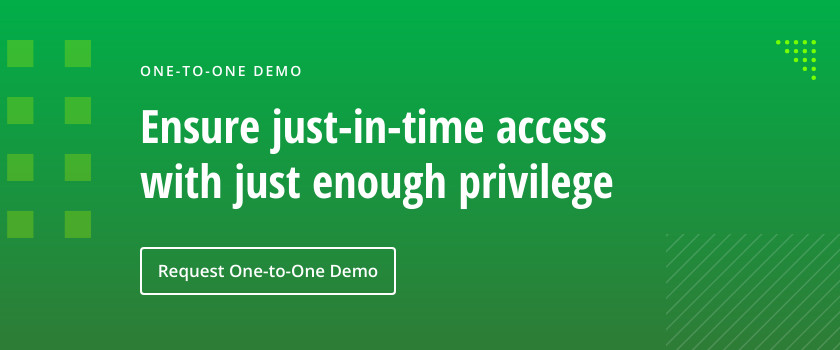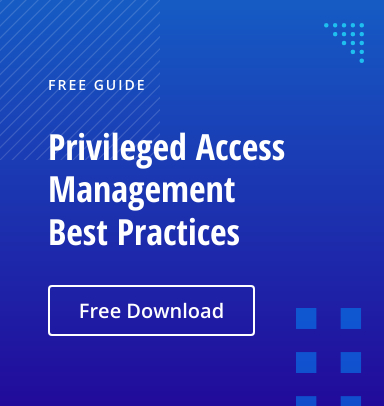Zero Trust and the Principle of Least Privilege are security models designed to improve security posture by restricting unnecessary access to systems and data. Both models are a reliable way to limit access to resources and tighten your security measures.
The Difference Between Zero Trust and Least Privilege
Although both Zero Trust and Least Privilege limit who has access to your data, networks, and other resources, each takes a different approach. Zero Trust is a more overarching approach, while Least Privilege works on a granular level.
What is Least Privilege?
The principle of Least Privilege (PoLP) dictates that users, systems, and processes should have only the minimum levels of access — or permissions — necessary to perform their tasks. Least Privilege applies to applications, systems, devices, and people. With Least Privilege, the goal is to reduce the attack surface so if you are compromised, the potential damage and lateral movement within the network are minimized.
What is Zero Trust?
Zero Trust is a broader security framework that assumes no entity, inside or outside the network, should be automatically trusted. Its slogan is “Never trust, always verify.” All entities trying to access resources on the network must continuously verify their security status, whether they’re users, devices, or network flows. Zero Trust is built around the idea that threats can originate from anywhere, so verification is always needed. This perimeterless security model makes security ubiquitous to address the challenges of modern, cloud-based business environments.
Least Privilege vs. Zero Trust
Zero Trust is a comprehensive framework incorporating several principles and technologies, including Least Privilege, to secure resources. Least Privilege is a specific principle you can use within a Zero Trust framework or another security model. Zero Trust centers around continuous verification and never implicitly trusts, while Least Privilege focuses specifically on limiting access rights for users to the bare minimum necessary.
Least Privilege vs. Separation of Duties
Separation of Duties (SoD) is another cybersecurity principle that eliminates the ability of a single individual to execute two conflicting sensitive tasks. Separation of Duty requires more than one person to complete specific tasks to prevent fraud and critical errors. While they might seem similar, separation of duties and least privilege are two distinct concepts. SoD is more about dividing responsibilities and roles to improve security and operational efficiency; Least Privilege is about limiting access rights within those roles. These principles can work together to improve your security posture by restricting access and mitigating risks.
Critical Components of the Zero Trust and Least Privilege Frameworks
Zero Trust and Least Privilege limit the ability of malicious actors to gain access to your organization in different but complementary ways.
Least Privilege uses the following tools:
- Access control: Strong access control mechanisms give users and systems only necessary access.
- Regular audits: Regular audits of access rights ensure they align with job functions and current requirements.
- Permission management: Dynamic permissions management adapts to changes in roles, responsibilities, and job functions.
Zero Trust includes measures such as:
- Identity verification: User identities are continuously verified through multi-factor authentication and other identity and access management tools.
- Device security: Devices that access the network must comply with security policies.
- Micro-segmentation: The network is divided into secure zones to contain breaches and minimize lateral movement.
- Least Privilege access: Least Privilege is a core principle within the Zero Trust framework that minimizes access to resources.
- Just-in-Time access: JiT access is a security approach that provides users with temporary access privileges to systems or resources only when necessary and for a specific purpose.
Risk and Benefits Associated Common to All Approaches
When adopting any security approach, including frameworks like Zero Trust and principles like Least Privilege or Separation of Duties, consider the risks and benefits. These considerations will help you shift from traditional, perimeter-based security models to more sophisticated, data-centric strategies without causing unnecessary upheaval within your organization.
User Productivity Concerns
Implementing strict security measures increases the complexity of day-to-day tasks for users. They may need to undergo multiple authentication steps or navigate more stringent access controls, potentially hindering productivity. Tighter security controls can also delay access to necessary resources, impacting time-sensitive tasks and reducing operational efficiency.
However, these approaches significantly minimize the risk of security breaches by protecting your assets and data. Targeted access limits users to only the resources they need, reducing clutter and streamlining workflows. In addition to providing better security, limited access can improve user focus and productivity.
Shifting From Traditional Security Approaches
Traditional security models relied on a solid perimeter defense, assuming everything inside the network could be trusted. However, with the move toward more cloud computing, remote work, and mobile access, this model is outdated and no longer an effective defense.
Modern threats often originate from compromised credentials or insider threats. If a hacker gains access to your system, perimeter security measures will allow them unfettered lateral access to your systems. Digital assets are no longer confined to the physical premises, so you’ll need a more granular and dynamic approach to security to protect them. Data and privacy protection regulations also require stricter measures that make perimeter-based security models obsolete.
Implications and Potential Conflicts
Implementing modern security approaches like Zero Trust and Least Privilege requires balancing securing assets and maintaining operational efficiency. One of the organizations’ most significant obstacles when shifting to more effective security models is creating a culture of security awareness and responsibility. Given that 95% of security breaches are caused by human error, no security change initiative will be effective without buy-in at all levels.
Adopting these frameworks will also likely require substantial IT infrastructure changes, including new technologies and processes. Implementing these changes can be time-consuming and expensive.
With new security protocols, you’ll need to balance potential conflicts, including:
- Security vs. usability: There’s an inherent tension between tightening security and maintaining user productivity. Overly restrictive policies can lead to user frustration and workarounds that undermine security.
- Cost vs. benefit: Implementing and maintaining advanced security measures can be costly and tie up resources that could be used elsewhere. You must evaluate the potential benefits against the costs to ensure a positive ROI.
- Adaptability challenges: Rapidly changing business needs and technologies require security policies that are effective and flexible. This challenge can lead to conflicts between IT and other business departments.
Striking the Right Balance Between Restricting and Providing Access
Your security measures must protect assets without unnecessarily hindering work that adds value to your organization. A comprehensive, measured approach will achieve both goals.
Implement a Layered Security Approach
Cybersecurity threats are increasingly sophisticated and complex, so your security measures must also be. The following tactics will strengthen your security posture:
- Data classification: Classify data based on sensitivity and the potential impact of a breach so you can apply appropriate access controls proportional to the risk.
- Role-based access control (RBAC): Assign access rights based on organizational roles. RBAC grants employees access to the information and tools necessary for their job functions, but no more. This simplifies the permissions management and is central to the principle of Least Privilege.
- Adaptive authentication: Use adaptive or risk-based authentication methods that adjust the level of authentication required based on the user’s context, such as location, device, and the sensitivity of the accessed resources. This approach reduces the friction for users under normal conditions while tightening security for higher-risk situations.
Foster a Culture of Security
While Zero Trust, Least Privilege, and Separation of Duties can limit the damage in the event of a breach, there’s no substitute for creating a culture of security awareness. Regular training sessions can help users understand the importance of security measures, including the reasons behind access controls. An informed user base is less likely to attempt to circumvent security controls and more likely to report security incidents.
Leverage Advanced Tools like Netwrix
Automated tools like Netwrix’s Privileged Access Management solution can help you implement a Zero Trust network by handling real-time decision-making about access requests, reducing the burden on IT staff, and minimizing user delays. Netwrix’s PAM solution replaces standing privileged accounts with just-in-time privileged access — and as a result, there are no highly privileged accounts for hackers to compromise or for account owners to accidentally or deliberately misuse. Machine learning algorithms can also detect anomalies and adjust access levels dynamically.
Regularly Review and Adjust Policies
The balance between security and access isn’t static. Regular reviews of access policies, user feedback, and incident reports allow you to adjust to changing needs, technologies, and threat landscapes.
The data protection regulatory landscape is complex and is only likely to improve with advances in generative AI and machine learning. Regular audits keep access controls and compliance requirements updated. Audits also identify areas where access may be too restrictive or too permissive so you can adjust as needed.
How Netwrix Can Help
Netwrix’s Privileged Access Management (PAM) enterprise solution gives you comprehensive control over privileged accounts, making it easy to secure your critical assets. It minimizes risks by following the principle of Least Privilege. You can automate access rights management, reducing the potential for human error and the workload on IT teams. It also offers detailed auditing capabilities to monitor and review privileged access activities to comply with regulatory requirements. Netwrix helps protect against external threats and insider abuses, improving your security posture.


